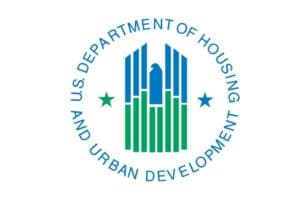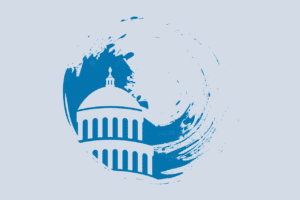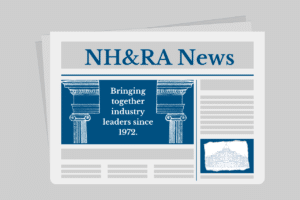Federal Housing Agency (FHA)

HUD Extends Comment Period on FHA Design and Construction Safe Harbor
HUD extended the comment period for its proposed rule on the Adoption of Additional Safe Harbors for the Fair Housing Act Design and Construction Requirements. Comments were originally due on March 15 and are now due on April 13 and can be submitted here.

Comments on FHA’s MAP Guide Draft Chapter Three Due March 20
The Federal Housing Administration (FHA) posted the draft chapter three and its corresponding appendix of the updated Multifamily Accelerated Processing (MAP) Guide.

FHA Eliminates the “Three-Year Rule”
HUD’s Office of Multifamily Housing published a Housing Notice (HN) & Mortgagee Letter (ML) called Revision of the Section 223(f) Policy Requiring Three Years of Post-Construction Sustained Occupancy. This new policy will allow newly constructed or substantially rehabilitated projects to refinance under Section 223(f) without a three-year waiting period.

House Financial Services Committee Marks Up Housing Bills
The House Financial Services Committee approved several housing-related bills, including Chairwoman Maxine Waters’ Housing Is Infrastructure Act (H.R. 5187). This bill would authorize more than $100 billion for public housing, Community Development Block Grants (CDBGs), the HOME Investment Partnerships program and other programs.

Opportunity and Revitalization Council Reports Findings to President Trump
On February 7, the White House Opportunity and Revitalization Council, chaired by HUD Secretary Ben Carson, released its one-year report on Opportunity Zones to President Trump. The report makes 43 legislative and regulatory recommendations relating to Opportunity Zones, including a call for the collection of data to assess the incentive’s value to distressed communities.

FHA Posts 2020 MAP Guide Appendix 16 For Review
The Federal Housing Administration (FHA) posted a draft of Appendix 16 on Organizational Chart for Lease Structure of its 2020 Multifamily Accelerated Processing (MAP) Guide. To provide feedback, respondents must use the 2019 Draft MAP Guide Response Worksheet and e-mail the response worksheet to HSNG_MF_2019MAPGuide-DraftingSuggestions@hud.gov by February 12.

FHA Reiterates Green Building Standards Program
In 2016, the Federal Housing Administration’s (FHA) Office of Multifamily Housing Programs introduced a voluntary green building standards program that allowed for a reduced annual mortgage insurance premium (MIP) at the rate of 0.25 percent for properties that are committed to green building practices. The reduced MIP for industry-recognized green housing encouraged owners to adopt higher standards for construction, rehabilitation, repairs, maintenance and property operations.

HUD Releases 2020 MAP Guide Draft Chapters
The Federal Housing Administration released three draft chapters of its Multifamily Accelerated Processing (MAP) Guide: Chapter 1 Introduction, Chapter 10 Management Analysis and Chapter 14 LIHTC Guidance. Comments should be provided on the Response Worksheet and emailed to HSNG_MF_2019MAPGuide-DraftingSuggestions@hud.gov. Comments are due by November 15.

Former FHA Commissioner Starts at MIT GCFP Executive Director
The MIT Sloan School of Management recently announced the appointment of Edward L. Golding as executive director and senior lecturer at the MIT Golub Center for Finance and Policy (GCFP). Golding, a former head of the Federal Housing Administration, will help lead the GCFP in its mission to support governments in their role as financial […]

HUD, FHA Promotes Development of Hospitals and Health Care Facilities in Opportunity Zones
HUD announced the Federal Housing Administration (FHA) will offer several incentives to encourage greater development of hospitals and healthcare facilities located in Opportunity Zones in Notice H-2019-10. Effective immediately, FHA is giving priority to Section 232 applications for facilities located in Opportunity Zones. FHA will provide expedited underwriting for Section 232 applications. FHA is also reducing application/exam fees for all Section 242 and Section 232 transactions for facilities in Opportunity Zones.

FY 2020 Deadline Looms, Senate Appropriations Committee Approves T-HUD Bill
Yesterday the Senate Appropriations Subcommittee on Transportation, Housing and Urban Development and Related Agencies (T-HUD) favorably reported its FY 2020 funding bill to the full committee. The full Senate Appropriations Committee will hold a hearing on the bill at 10:30 am EDT on September 19 in the Dirksen Senate Office Building, Room 106 and via webcast.
As of publication, the T-HUD bill has yet to be released. Overall the subcommittee received a 302(b) allocation of $74.3 billion, $3.2 billion above the FY 2019 enacted levels. HUD received $56.0 billion in total budgetary resources, which is offset by $7.4 billion in receipts from the Federal Housing Agency/Ginnie Mae for a net funding level of $48.6 billion, an increase of $2.3 billion above the FY 2019 enacted level.

House Passes Three Housing Bills on Rural Housing Preservation, Carbon Monoxide and Homebuyer Assistance
The House has passed a set of housing-related bills, advancing these measures to the Senate. The Strategy and Investment in Rural Housing Preservation Act of 2019 (H.R. 3620) would permanently authorize the U.S. Department of Agriculture’s (USDA) Multifamily Housing Preservation and Revitalization program, and would authorize $1 billion to carry out the program. The Safe Housing for Families Act of 2019 (H.R. 1690) would authorize over $300 million over three years to fund the installation and maintenance of carbon monoxide detectors in HUD’s public housing units.
Finally, the Homebuyer Assistance Act of 2019 (H.R. 2852) would make it easier for homebuyers to buy a home with a Federal Housing Administration mortgage by alleviating the current shortage of certified appraisers.